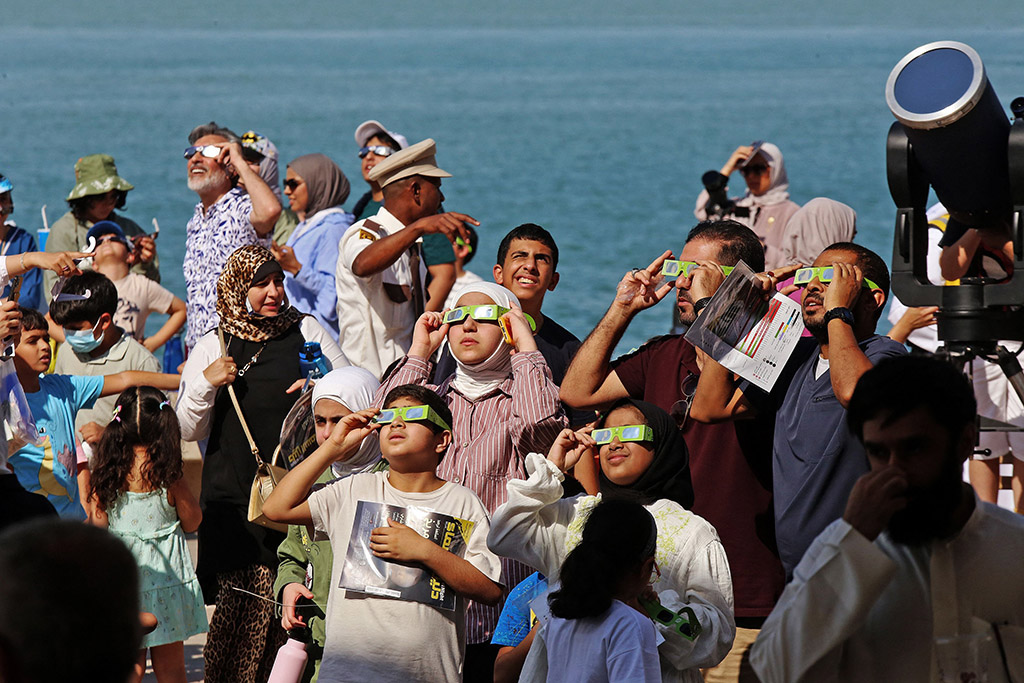KUWAIT: Kuwait’s skies witnessed on Tuesday a partial solar eclipse - a celestial phenomenon deemed the most significant in the country this year. Director of space sciences at the Scientific Club Issa Al-Nasrallah told KUNA the partial solar eclipse is the first recorded in Kuwait since June 21, 2020, when Kuwaiti skies witnessed a partial eclipse at a rate of 60 percent. On Dec 26, 2019, another partial eclipse was witnessed when the sun appeared blurred at its rise. The phenomenon will recur in Kuwait on Aug 2, 2027, and there will be another eclipse on March 20, 2034, he added.
Meanwhile, Sheikh Abdullah Al-Salem Al-Sabah Cultural Center said the shape of the eclipse varied from one region to another. The concealed side of the Sun was larger in northern regions. Khaled Al-Ajman, the museum’s curator, told KUNA the partial eclipse lasted for two hours and 24 minutes. At 1:30 pm, citizens and residents performed the eclipse prayer, as it is an obligatory sunnah whenever there is an eclipse. Classes at government and private schools were suspended on Tuesday to protect the eyesight of children.



The rare spectacle began over Iceland on Tuesday and made its way east across a swathe of the Northern Hemisphere. The partial eclipse began at 0858 GMT and ended off the coast of India at 1302 GMT, crossing parts of Europe, North Africa and the Middle East on its way, according to the IMCCE institute of France’s Paris Observatory.
Solar eclipses occur when the Moon passes between the Sun and Earth, casting its shadow down onto our planet. A total solar eclipse happens when the Moon completely blocks the Sun’s disk, momentarily plunging a portion of the Earth into complete darkness. However Tuesday’s eclipse was only partial, and the “Moon’s shadow did not touch the surface of the Earth at any point,” the Paris Observatory said in a statement.
The Moon covered a maximum of 82 percent of the Sun over Kazakhstan, but not enough to darken the daylight, Paris Observatory astronomer Florent Deleflie said. At least 95 percent of the Sun needs to be obscured to get a “sense of darkness”, Deleflie told AFP. - Agencies











